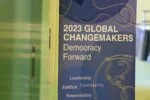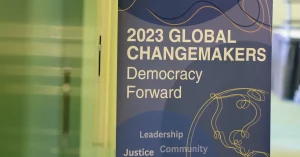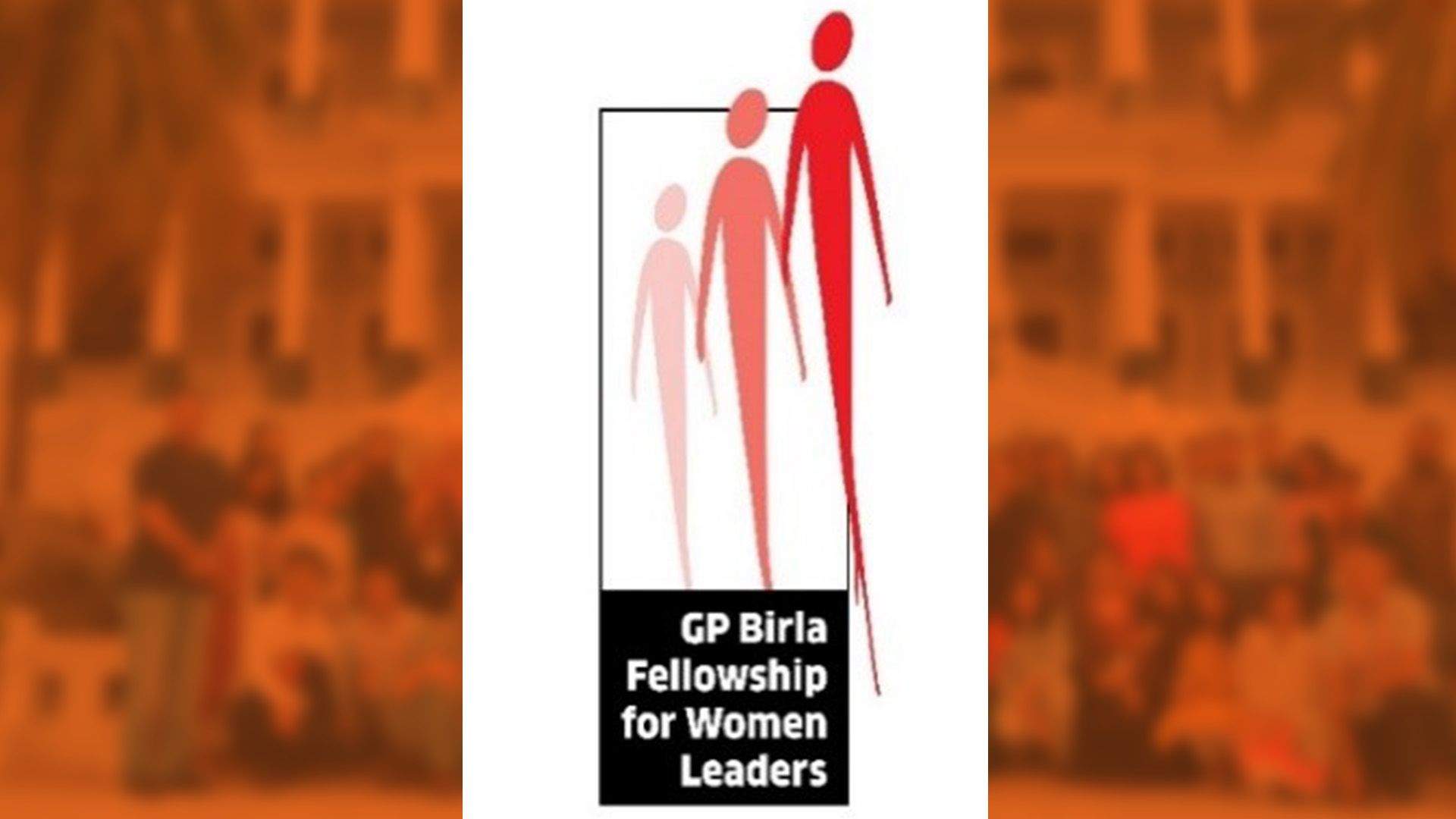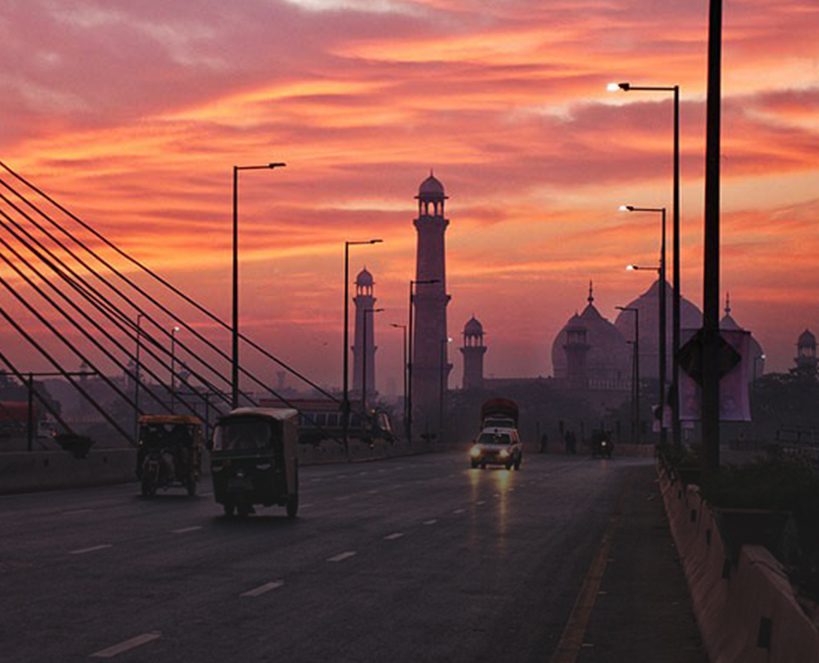HIGHLIGHTS
- Five years after, GST compensation issue remains unresolved
- Rupee depreciation continues, RBI uses forex reserves
- GDP growth 8.7 % in 2021-22, but will be lower in 2022-23
- Tax revenues buoyant, but slippage in deficit target unavoidable
- Finance Ministry report raises concerns over likely twin deficits
- Higher expenditure outlays create fresh burden for govt finances
- RBI hikes repo rate again, set to miss inflation target
- Govt responds to unemployment fears, announces more jobs
- Agnipath triggers protests, but defence finances to benefit
- WTO reaches fresh pact, ending a drought of deals in a decade
- Govt clears 5G auctions, industry unhappy over price
- Auto companies on a capex spree for electric vehicles
Five years after, GST compensation issue remains unresolved
India’s most ambitious and complex indirect tax reform, the Goods and Services Tax, has completed five years. It was launched on July 1, 2017, and the completion of five years coincided with the holding of the 47th meeting of the GST Council on June 28 and 29. Chaired by the Union finance minister, the GST Council is the body that decides on all issues pertaining to tariff fixation and administration of the new system. The last five years of the GST journey has been difficult and its annual growth in revenue collections failed to meet expectations. The average monthly GST collections in 2018-19 was Rs 98,000 crore and they rose to Rs 1.23 lakh crore in 2021-22 – a rise of 25 per cent in three years, much less than the anticipated 14 per cent growth every year. The share of GST collections in gross domestic product or GDP rose marginally from 6.22 per cent in 2018-19 to 6.25 per cent in 2021-22. While major progress was made in increasing the coverage using technology like the introduction of e-invoicing and invoice matching, real reforms eluded the GST. The GST slabs were not reduced to the optimum level of 3, the rates were not rationalised, and its coverage was not widened to include petrol and diesel. What complicated matters was two rounds of rate cuts on hundreds of items in the run up to the general elections. While the task of rationalising rates has now been postponed by a few months, the contentious issue of compensation to states could not be resolved at the 47th meeting of the Council. The compensation cess has been extended till March 2026 to help the Centre pay back the loans it had taken to compensate the states during the Covid years. But the decision on the states’ demand on continuing with the compensation has been deferred. For all practical purposes, the states would not have any compensation benefit from July 2022. The only silver lining for them is that GST collections have been buoyant in the last few months.
Rupee depreciation continues, RBI uses forex reserves
The Indian currency has been depreciating steadily despite interventions by the Reserve Bank of India to manage the fall without causing volatility. The Indian rupee has depreciated by about 6 per cent against the US dollar in 2022. On June 29, it was close to touching the Rs 79 level to a dollar. In June, there was a net selling of stocks by foreign institutional investors or FIIs to the tune of $6.3 billion, the largest monthly outflow so far in 2022. The cumulative net sales of Indian stocks by FIIs in the calendar year of 2022 so far are over $28 billion. While FII outflows have certainly put pressure on the rupee, higher US interest rates and a surge in global commodity prices, including the rise in crude oil prices, have also been responsible for the current outlook for the Indian currency. The volatility in the rupee value is expected to continue for some more time, even though the RBI has used a substantial amount of its foreign exchange reserves to prevent any sharp depreciation. Its foreign exchange reserves has dropped from a high of about $640 billion in September 2021 to $590 billion now. The fall in rupee is not a cause for any panic. It helps Indian exports become more competitive. In any case, the real effective exchange rate is still higher than the current nominal exchange rate.
GDP growth 8.7 % in 2021-22, but will be lower in 2022-23
India’s economic growth in 2021-22 was 8.7 per cent, according to the provisional estimates released by the National Statistical Office. This was marginally lower than the earlier estimate of 8.8 per cent made in February. The Indian economy had contracted by 6.6 per cent in 2020-21, the year when the Covid impact was the harshest on economic activity. How sharp is this recovery? Compared to the pre-Covid year of 2019-20, the real size of the Indian economy is just about 1.5 per cent higher in 2021-22. In other words, the Indian economy has just gone past the level it had two years ago. Private consumption, which accounts for about 56 per cent of GDP, was still lower than the level obtaining two years ago. On the expenditure side, however, all sectors except trade, hotels and communication services were above the pre-pandemic levels of 2019-20. The bigger question that policy makers are wrestling with is how well the Indian economy will perform in 2022-23. The Reserve Bank of India has projected a growth rate of 7.2 per cent for the current year, although the government believes growth will be higher at about 7.5 percent. With general inflation, a broad-based spike in commodity prices and tepid global demand as a result of the Russia-Ukraine conflict and the pursuit of tight money policy by central banks in most countries, achieving a growth target of 7.5 per cent would be tough task.
Tax revenues buoyant, but slippage in deficit target unavoidable
Thanks to robust recovery in tax collections and marginal savings on expenditure, the Union government’s finances in 2021-22 turned out to be better than what the Budget presented in February had indicated. Instead of a fiscal deficit of 6.9 per cent of GDP, the provisional deficit is now pegged at 6.7 per cent. This was possible because of the increase in the nominal size of the economy (thanks to inflation) and a sharp rise in tax and non-tax revenues. The increase in revenues more than offset the rise in the revenue expenditure. Capital expenditure saw a marginal decline from what was given in the revised estimate in February 2022. The developments in the first quarter of 2022-23 so far look promising from the tax revenue point of view. Advance tax collections of direct taxes rose by 48 per cent to Rs 42,679 crore. Collections of the goods and services tax (GST) in the first two months of 2022-23 have recorded robust growth at Rs 1.67 lakh crore in April and Rs 1.4 lakh crore in May. Officials expect the average monthly GST revenues to be around Rs 1.3 lakh crore, higher than the monthly average figure of Rs 1.23 lakh crore in 2021-22. This augurs well for the government’s efforts at managing the impact of higher expenditure and lower fuel tax revenue (tax rates were cut). According to estimates, the total additional burden on account of higher spending and fuel tax revenue loss would be about Rs 3.36 lakh crore. Offsetting that extra hit will be a tall task. Expect further slippage in the fiscal deficit from the projected 6.4 per cent of GDP, even though the government has so far made no change in its borrowing planning for the current year.
Finance Ministry report raises concerns over likely twin deficits
In a candid admission of the formidable challenges facing the Indian economy, the Union finance ministry’s Monthly Economic Review released on June 20, alerted the nation to the possibility of a twin-deficit problem. Though such a possibility was low, according to the ministry’s Review, the fact that it chose to highlight the danger is significant. The Review noted higher commodity prices and a rising subsidy bill had threatened to widen both the fiscal deficit and the current account deficit. It drew comfort from the fact of a rise in the government’s capital expenditure, which it believed would underpin growth. But its concern was evident. It noted: “However, as government revenues take a hit following cuts in excise duties on diesel and petrol, an upside risk to the budgeted level of gross fiscal deficit has emerged. Increase in the fiscal deficit may cause the current account deficit to widen, compounding the effect of costlier imports, and weaken the value of the rupee thereby further aggravating external imbalances, creating the risk (admittedly low, at this time) of a cycle of wider deficits and a weaker currency.” India’s current account deficit widened to 1.2 per cent in 2021-22, compared to a surplus of 0.9 per cent of GDP in 2020-21. The Centre’s fiscal deficit too was at an elevated level of 6.71 per cent last year, though it was lower than 9.2 per cent of GDP in 2020-21.
Higher expenditure outlays create fresh burden for govt finances
Equally candid was the Review’s assessment that the possibility of a fiscal slippage in 2022-23 could not be ruled out. The government’s fertiliser subsidy bill in the current year was set to rise from the Budget estimate of Rs 1.05 lakh crore to Rs 2.5 lakh crore because of a rise in international prices of fertilisers. The food subsidy bill would also increase from the earlier estimate of Rs 2 lakh crore to Rs 2.8 lakh crore, following the government’s decision to extend the PM Garib Kalyan Anna Yojana, a free food ration scheme, till September 2022. Then, there were excise duty cuts for petrol and diesel, which would mean a revenue hit of about Rs 85,000 crore during the year. The reduction in import duties on items to help cool prices of imported raw materials would mean a revenue loss of about Rs 15,000 crore. Similarly, the cost of extending concessional cooking gas to 90 million beneficiaries of the PM Ujjwala Yojana would mean an extra hit of Rs 6,000 crore for the exchequer. The total burden on account of all these duty cuts and higher outlays on various schemes was estimated at Rs 3.36 lakh crore or about 1.3 per cent of the projected GDP for the current year. Unless tax revenues go up substantially, a slippage in the deficit target would be unavoidable. Tax revenues so far in the current year have been buoyant, but not that buoyant to compensate for the entire excess in expenditure and revenue loss.
RBI hikes repo rate again, set to miss inflation target
The outcome of the deliberations at the June meeting of the Monetary Policy Committee of the Reserve Bank of India was a foregone conclusion. Even before the Committee began its consultations, there were statements from the RBI governor that suggested an upward trajectory for the repo rate, at which commercial banks can borrow money from the central bank. Analysts were almost certain that on top of the off-cycle increase in the rate by 40 basis points on May 4, the June meeting would raise the rate by another 50 basis points. And that is exactly what the Monetary Policy Committee decided unanimously and announced on June 8. With this increase, the repo rate rose to 4.9 per cent. Equally important was the RBI’s inflation projection, which was revised upwards at 6.7 per cent during the whole of 2022-23, from the earlier projection of 5.7 per cent. The higher projection was made on the assumption of a normal monsoon and the average Indian basket crude oil price staying at $105 a barrel (in June 2022, the India basket crude oil price ruled at $116 a barrel). The RBI Governor noted that sustained high inflation could trigger inflationary expectations and hence monetary policy measures were needed to anchor those expectations. That also explained why the Committee noted that the monetary policy stance no longer would remain accommodative and instead it would now be focused on a calibrated withdrawal of the accommodation granted during the pandemic. Along with the 50-basis point rise in the repo rate, the Committee also increased the standing deposit facility rate (under which banks can park surplus liquidity with the central bank overnight or for a longer period) from 4.15 per cent to 4.65 per cent and the marginal standing facility rate (under which banks can get funds from the RBI on an overnight basis against their excess holding under statutory liquidity ratio) from 4.65 per cent to 5.15 per cent. With inflation expected to rule above 6 per cent, expect the RBI to make a statement to Parliament in the latter half of the year on why it failed to adhere to the inflation target and what it planned to do return to the mandated path.
Govt responds to unemployment fears, announces more jobs
Surprising most commentators and analysts, the Modi government on June 14 announced a grand plan to hire 1 million people in different government departments over the next 18 months. It was a surprise because the move brought to light for the first time the government’s sensitivity to growing unemployment in the country. Even though there have been reports of joblessness in different sectors of the economy after the Covid pandemic, the government’s narrative on the Indian economy’s resilience did not fully support such a sombre view on jobs. But the decision to hire 1 million people in a short span of time was an indirect confirmation that jobs were in shortage and the government had to step in to create them. Actual data show that the Union government’s staff strength saw a marginal decline from 3.27 million in March 2019 to 3.18 million in March 2020. The total number of unfilled vacancies in government departments was as high as 0.87 million. It is likely that the task of creating 1 million new jobs would essentially mean filling the existing vacancies of 0.87 million posts. The actual increase in hiring would be only 0.13 million. Nevertheless, it would be an ambitious task to hire over 1 million people in just about 18 months. Moreover, there would be questions on whether the government should have spent the money in hiring these people more fruitfully by increasing investments in projects, which would have created jobs and by creating a more attractive and enabling conditions for generating fresh opportunities in the private sector.
Agnipath triggers protests, but defence finances to benefit
On June 14, 2022, the Union Cabinet also cleared the government’s plan to hire about 125,000 people in the age group of 17 to 21 years for the three wings of India’s armed forces – the Army, the Navy and the Air Force. The scheme was called Agnipath and envisaged such hiring on new terms – instead of the earlier longer term of service, the new recruits would be hired for only 4 years, at the end of which only 25 per cent of them would be absorbed in service for a longer duration. Those who would be let go after 4 years would be paid a lumpsum amount of about Rs 12 lakh, half of which would be the contribution of the recruits, to be called Agniveers. They would get a salary ranging between Rs 30,000 and Rs 40,000 per month plus allowances. But there would be no pension benefit for the Agniveers. There were violent protests for a few days over the scheme as potential aspirants felt cheated. The government had not hired youths for the armed forces for two years due to Covid and now that it was reopened, the new recruits were denied pension benefits and a four-year tenure to only 25 per cent of those who would be hired under the scheme. The government responded with a tweak in the scheme by increasing the upper age limit by two years to 23. The government also argued that those who would be out of the services after four years could be absorbed in the private sector as ex-servicemen. However, the agitating young men were conscious that the absorption level of ex-servicemen in public sector enterprises was much below the quotas earmarked for them and the absorption in the private sector was even lower. But from the government’s point of view, the Agniveer scheme was aimed at fixing the broken finances of the government, particularly about the ministry of defence. Quite apart from the argument that Agnipath would help the defence forces get younger, leaner and fitter, the scheme’s contribution to reducing the burden of pension on defence finances in the future would be significant. Almost 23 per cent of total defence outlay is now earmarked for defence pensions, which is slightly higher than the salary burden. In other words, almost half of the defence expenditure is spent on salary and pensions. Agnipath would help defence to look forward to a future where it would have more resources at its disposal on building its hardware capabilities. Of course, the redeployment of Agniveers after four years would pose a big challenge. The government would have to frame follow-up policies to ensure that those Agniveers who do not get absorbed after 4 years, get a decent opportunity to be hired by the public sector and private sector enterprises. That task would be no less important and challenging.
WTO reaches fresh pact, ending a drought of deals in a decade
For well over a decade, the discussions at the World Trade Organisation’s (WTO) ministerial meetings would not lead to an agreement. The failure to conclude an agreement for so long was seen as further confirmation of fears that multilateralism in global trade was on the wane, if not on the verge of a collapse. But that jinx was broken at Geneva, where the 12th ministerial meeting of the WTO, a 164-nation body, concluded an agreement that truly became historic because of at least ending the drought of no-deals, if not for making some progress in a few contentious areas. That the deal came through only after extending the meeting that was originally scheduled for four days was yet another proof of the challenges that the WTO overcame this time. The deal included patent waiver on exports of vaccines up to five years, an extension of the tax moratorium on e-commerce companies for another 18 months, no export restrictions on purchases of food by the World Food Programme and no restriction on subsidies for fishing within a member-country’s exclusive economic zone or EEZ, restrictions on subsidies for fishing in areas outside the EEZ and a check on illegal unreported and unregulated fishing by developed countries and China. For India, there were gains, but these were partial in many areas. For instance, India failed to secure permission for exports of food grains from public stocks on a government-to-government basis. The Geneva deal deferred a decision on the public stockholding issue to the next ministerial meeting of the WTO, to be held in the next two years.
Govt clears 5G auctions, industry unhappy over price
In a major decision, the Union Cabinet cleared the auctions for 5G telecom spectrum at its meeting on June 15, 2022. It set the base price for the auction of 5G spectrum in 3.5 gighertz (GHz) band at Rs 317 crore per megahertz (MHz). The period of the licence for the spectrum will be 20 years. Over 72 GHz of spectrum are expected to be auctioned in the next few months, ushering in a qualitative change in the speed at which telecom services are provided and facilitating the growth of digital communication, artificial intelligence, and internet of things. Indian telecom companies are slowly recovering from serious financial constraints of the past few years, after the government came out with a rescue package that included deferring the payment of dues and removal of spectrum user charges. Despite that, the telecom industry is not too happy with the 5G spectrum auction norms. It was expecting a 90 per cent cut in the base price for the auctions from what was recommended by the regulator. The government reduced the price by only 36 per cent. The industry was also hoping that the licence period would be kept at 30 years. This too was a cause for disappointment. But what got its goat was the government decision to allocate 5G spectrum separately to enterprises that wished to set up their own telecom network for their captive use. The telecom industry is upset that it has lost out on a big opportunity. On the other hand, the large enterprises including companies like Google and Amazon are thrilled because they can now invest in creating their own networks for internal use and improve their efficiency. Experts believe that this would mean a new business opportunity over time and even though the telecom operators are upset, the economy will benefit.
Auto companies on a capex spree for electric vehicles
Even as the Reserve Bank of India’s surveys show signs of a rise in the manufacturing sector’s capacity utilisation, which in turn should augur well for investment prospects, the Indian automobile sector has already begun committing fresh investments to build capacity. According to reports, automobile companies and their ancillaries are expected to invest an estimated Rs 70,000 crore over the next five years on manufacturing electric vehicles as also improving their presence in this sector. This has a direct correlation with the Indian automotive industry’s decision to enter the electric vehicle segment in a big way, planning the launch of as many as 25 new models in the next few years. The government’s incentive schemes to encourage the manufacture and purchase of electric vehicles have also played a role in this revival of investment in the automotive sector. Topping the list of companies that would be committing fresh investments are: Tata Motors, Suzuki Motor, Hyundai, Ola Electric, Mahindra & Mahindra, Hero Electric, TVS Motor, Ashok Leyland, Bajaj Auto, Ather Energy and a host of other companies.
The previous issues of Indian Economy Review are available here: LINK
Supported by
………………………………………………………………………………………………
(The views expressed are personal)
………………………………………………………………………………………………

























